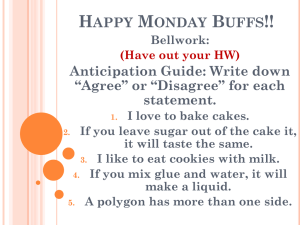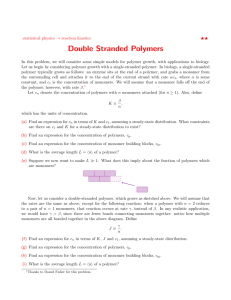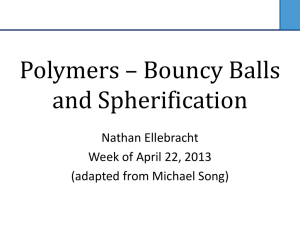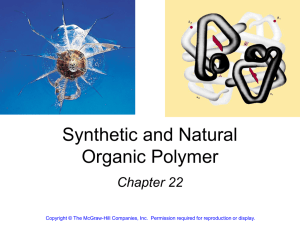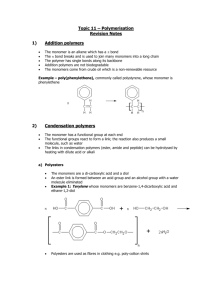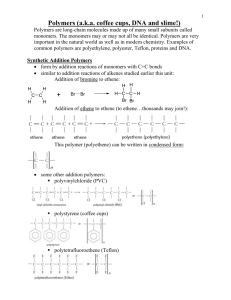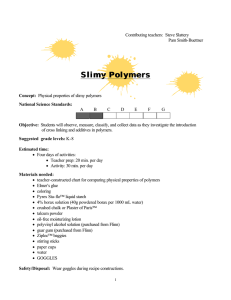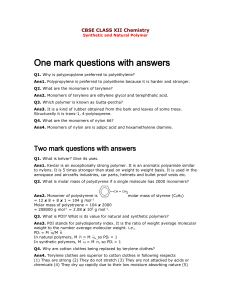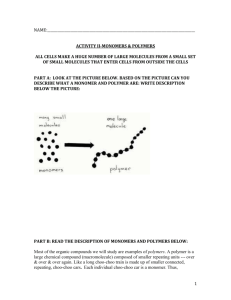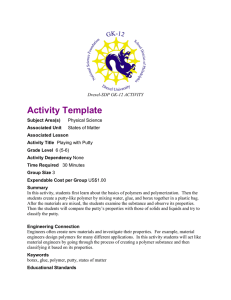polymer
advertisement
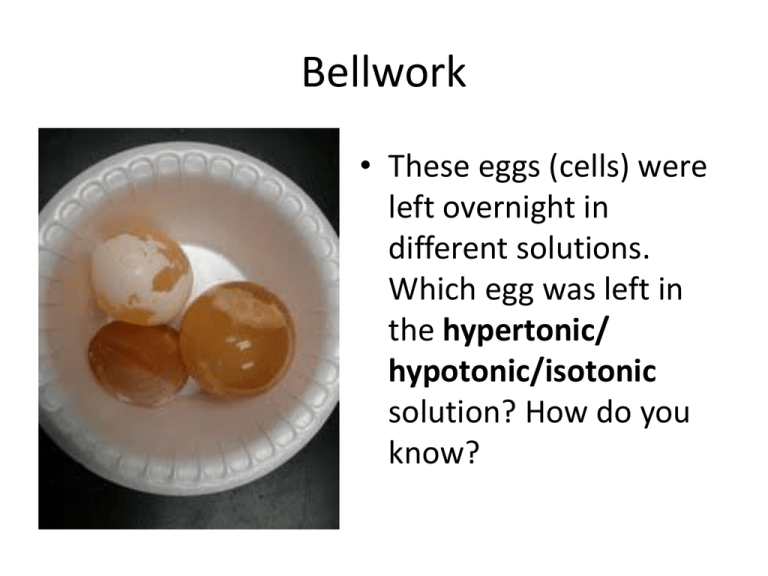
Bellwork • These eggs (cells) were left overnight in different solutions. Which egg was left in the hypertonic/ hypotonic/isotonic solution? How do you know? Science Fact of the Day: The little Alaskan Wood Frog is capable of reviving itself back to normal life after staying completely frozen for months, during which its heart, brain, and other organs stop functioning. CO: I will understand how polymers are made. LO: I will write notes and complete a lab. KWL • Fill in the section “Know” with what you know about monomers and polymers. • DON’T look at your homework notes. Monomer • Mono = one • Monomers are small units that can be combined to make larger units. – Subunits of polymers Polymers • poly= many • Polymer= a large molecule made by bonding smaller molecular units (monomers) together • Monomer + monomer + monomer +…= polymer What is the monomer in the above polymers pictured? Examples of biological polymers include: • Proteins, Complex Carbohydrates, Lipids, Nucleic Acids (DNA) Dehydration synthesis = a process through which polymers are formed from monomers through the removal of H2O. Hydro=water Lysis=cut Hydrolysis = the process of breaking down polymers into monomers by the addition of H2O. Hint: Think red rover Making/breaking polymers is part of metabolism. Today’s Activity: The “Gloop” Lab Directions for making “gloop”. 1. Pour the small cup of glue into your plastic baggie…no, not every drop will go in. 2. Add 2-4 drops of food coloring to the glue and knead together with your hands. 3. Add 7mL of water to the baggie using the marked graduated cylinder and mix thoroughly. 4. Add 8 mL of borax to the baggie using the marked graduated cylinder and mix thoroughly. 5. Title the next section of your notebook, “Gloop Lab”. In this lab… The glue contains a polymer called polyvinyl acetate resin. We changed the polymer’s behaviors twice in this activity: once when we added water and the second time when we added borax. Gloop Lab Report: Copy what is in bold and answer the questions: 1. When we added water, what process was occurring: dehydration synthesis or hydrolysis? Describe the glue after water was added. 2. When we added borax, what process was occurring: dehydration synthesis or hydrolysis? Describe the glue after borax was added. 3. Summarize what happened during the Gloop Lab in 30 words. You must use the words: polymer, hydrolysis, dehydration synthesis KWL • Summarize what you’ve learned in 30 words. Include the words: monomer, polymer, synthesis, water
